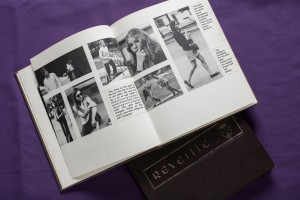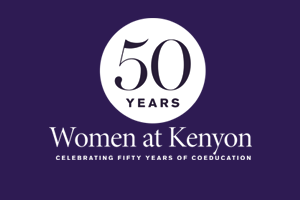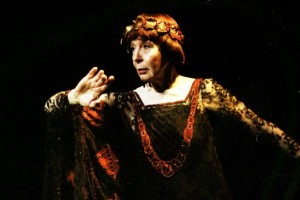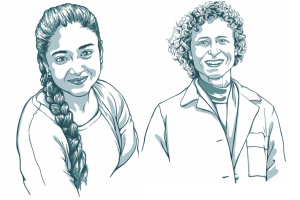The Sept. 8, 1969, edition of the Cleveland Plain Dealer featured a news article about a big change underway at Kenyon College. The headline read, “Male Tradition Broken: Coeds at Kenyon after 145 Years,” followed by, “A new look comes to Kenyon College today — girls. For the first time since the college was founded here 145 years ago, girls have been admitted. … Mini-skirted lasses began arriving at the tree-lined campus."
The transition, however, was anything but smooth. A construction strike meant that the inaugural female students arrived on campus to find that their designated dormitories were incomplete; many were dispersed, chaotically, into temporary housing throughout Gambier. In addition, a shortage of women’s restrooms on campus, an absence of women’s athletic opportunities, a lack of local healthcare options, and general administrative indecision around things like library and dormitory visiting hours for the women did not help; nor did the fact that women, at first, were not allowed to sign the College’s Matriculation Book.
But these women, as the new dean of the women’s college, Doris Crozier, told the Kenyon Collegian at the time, were “pioneers.” They fought and overcame obstacles, and over time integrated themselves into every aspect of campus life. In fact, since 2001, Kenyon has consistently enrolled more female than male students, with the percentage of female students fluctuating between 52 and 56 percent over the years.
Throughout the year, the College will highlight and celebrate the women of Kenyon and honor half a century of coeducation.
What follows is a cross-section, by no means complete, of some milestone moments from the past 195-plus years of Kenyon’s history, highlighting women’s impact at the College and the varied accomplishments of Kenyon alumnae over the decades.
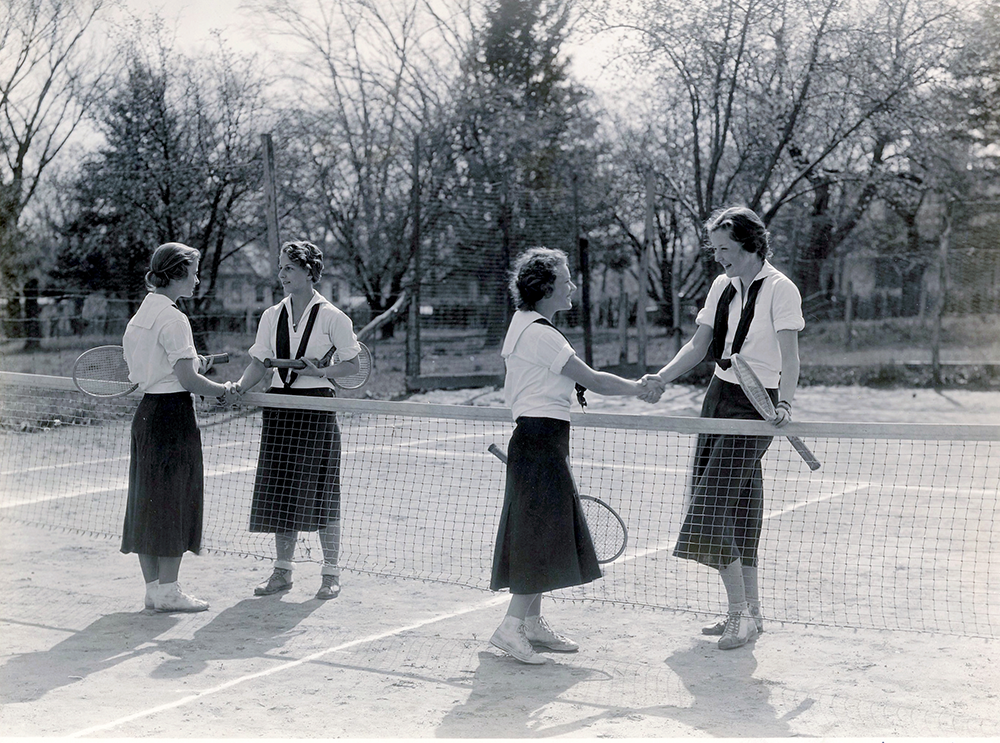
1800s to 1950s: Before Coeducation
From the time of Kenyon’s founding, women played a role in the College’s growth as a liberal arts institution.
1824
On Dec. 29, Kenyon College is officially incorporated by action of the Ohio state legislature.
1845
The main, or upper, room of Rosse Hall, the chapel named for Lady Jane King Parsons, the College’s most generous original donor, is first used for regular Sunday worship. A portrait of her, labeled “Lady Jane King, who became the Right Honorable Dowager Countess of Rosse, Died 1836,” currently hangs in the foyer of Rosse Hall.
1887
The Harcourt Place Seminary for Young Ladies and Girls opens in Gambier, with Lucy Caroline Andrews, an alumna of the University of Michigan and a former member of the faculty at Wellesley College, as headmistress. The November 1887 Collegian describes a less than desirable initial outcome: “When school opened at Harcourt and the girls first came on the ‘Hill,’ there were, it is true, a few students who acted in such a manner as to draw down upon them the condemnation of the mass of students,” the newspaper reports. “They acted as though they had never seen a woman before.”
1888
Harriet Lathrop Merrow, a Wellesley alumna who will go on to become the first woman professor of botany at the University of Rhode Island in 1895, joins the faculty of the Harcourt Place Seminary, where she will serve for three years as an instructor in natural sciences.
1889
Emma Wright joins the Kenyon administration as College librarian and serves until her death in 1896.
1892
In the January-February Collegian, the editors ask, “Is it not high time that Kenyon offered the same advantages to women which for more than sixty years she has been offering to men?”
1896
Ellen Douglas Smith Devol is named the College’s librarian, a post she holds for 26 years.
1906
Philena Taylor becomes the first woman to serve as secretary to the College’s then-president, William Foster Peirce. She also serves as the College’s assistant treasurer, and then treasurer, until Peirce’s retirement in 1937.
1924
During Kenyon’s centennial celebration, Florence Kling Harding accepts an honorary degree on behalf of her recently deceased husband, U.S. President Warren Gamaliel Harding.
1936
At the end of the 1935-36 academic year, the Harcourt Place School, also known as the Harcourt Place Seminary, closes for the last time — a victim of the Great Depression.
1946
The June 19 Collegian leads with the headline, “Announce Kenyon to Go Co-ed in Fall.” Other stories in the special humor issue deal with a biology professor disproving Darwin’s theory of evolution, the College’s addition of a Department of Piscatology, and subversive activities on the part of the editors of a certain campus periodical. “Who knows, for the first time in its long and distinguished journalistic career the Collegian may be published by members of the fair sex in the Fall Term,” a satirical article reads.
1947
Florence Dyke Lewis Rauh, of Elyria, Ohio, donates $323,000 to Kenyon in memory of her late husband, David Lewis. The first $50,000 is allocated to a scholarship fund, while the remainder of the gift is designated for construction of a freshman residence hall.
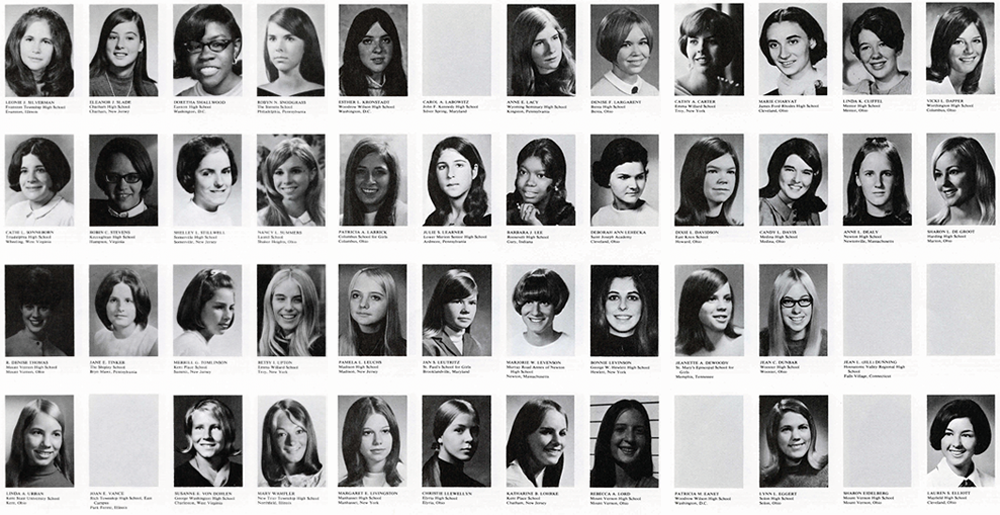
1960s: The Move to Coeducation
Kenyon makes the decision to admit women, expanding the size of its student body and restoring its financial health.
1964
In a June meeting, President F. Edward Lund and the Board of Trustees discuss what it would take to save Kenyon, which is teetering on the edge of financial ruin. In a Fall 2013 Bulletin article (“How Women Came to Kenyon”) journalist Joel Hoekstra explains, “For more than a decade, the College had been operating at a deficit. The revenue generated by an enrollment of roughly 600 students no longer kept up with expenses. Financial support among alumni was tepid, and the school’s endowment was tiny. The College had more than $1 million in unpaid bills. The future looked bleak indeed.” In March, the article notes, “a group of alumni, administrators, and consultants met to consider the only viable fix: boosting enrollment.” The College could either recruit more men (a challenge) or bring women to Kenyon.
1965
On Feb. 27, the Kenyon board approves (in principle) the expansion of the student body and the creation of the Coordinate College for Women, which would admit around 175 female students in the fall of 1969. According to the Bulletin article referenced above, “as news of the plan leaked out, alumni and students reacted, often vehemently. … A campus poll indicated that more than half of the 644 students opposed entry of women. Steven Silber, chair of the Students’ Committee Against the War in Vietnam, told a journalist: ‘Women would be in the way. You can get hung up on women.’”
1966
Sylvia Barnard is hired into a two-year (but potentially tenure-track) position as an assistant professor of classics, but leaves after one year to take a job at the State University of New York at Albany.
1967
Kenyon announces its Program for Expansion, which entails an increased enrollment of men and, for the first time, the admission of women.
1968
On Oct. 15, Kenyon breaks ground for construction of the commons and residence halls of the Coordinate College for Women. As the 2013 Bulletin story notes, “The new dorms would cluster women in sixteen-person ‘social units’ … and would feature a curved ‘feminine’ design, according to the architect’s notes.”
On Dec. 12, Doris Bean Crozier is announced as the dean of the Coordinate College for Women. “An international traveler who had lived and taught in Germany and Cambodia, Crozier knew something about foreign cultures — an understanding that, as the sole female member of an all-male administration, would serve her well,” Hoekstra writes in the 2013 Bulletin article.
1969
Harlene Marley, a new assistant professor of drama and the second woman (after Sylvia Barnard) to be hired into a tenure-track position at Kenyon, arrives on campus.
On Sept. 8, Kenyon marks the official opening of the Coordinate College for Women and the unofficial end of single-sex education on the Hill. The Collegian, in its Sept. 18 edition, notes that although “many Kenyon men welcomed the presence of girls on Middle Path, the majority still viewed the addition with clearly mixed feelings. As for the Coordinate women, they were constantly warned about infringing on the men’s sacred ‘traditions.’”
Barbara (Lee) Johnson ’73, Glory (Wolfe) Shuler ’73 and Doretha (Leftwood) Smallwood ’73, Kenyon’s first black female students, arrive on campus.
Mieko Muto becomes the first female international student to attend Kenyon. An exchange student from Japan’s Waseda University in 1969-70, Muto immerses herself in Kenyon’s culture of writing and becomes circulation editor of the Collegian.
On Sept. 18, Linda (Urban) Sears ’73 becomes the first female student to have her byline in the Collegian. The article’s title is “Women in Kenyon Tradition.”
Also in early October, a group of nine women begins working out in Shaffer Pool in anticipation of creating a women’s swimming team.
On Oct. 31, Ohio State University President Novice Fawcett, a 1931 graduate of Kenyon, addresses the Founders’ Day Convocation in Wertheimer Fieldhouse. The Oath of Matriculation, however, is administered only to the men in the freshman class.
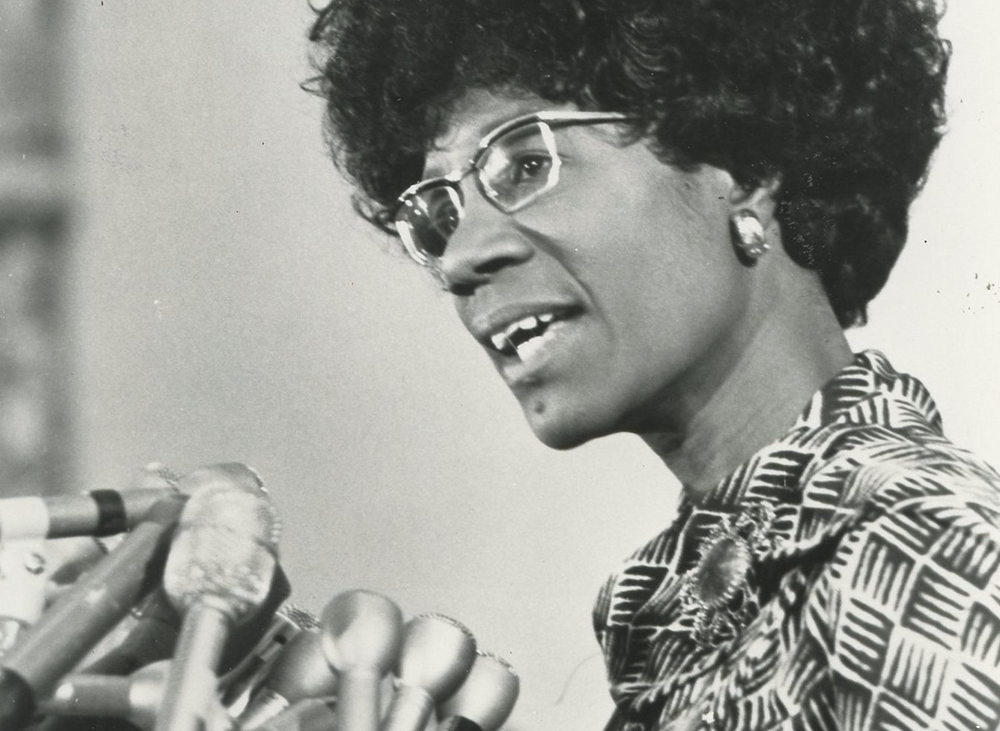
1970s: The Pioneers
The first women to arrive on the Hill revolutionize the academic and social life of the College.
1970
On Jan. 28, the Coordinate Council abolishes curfews for students at the Coordinate College for Women.
From Feb. 5-7, the Kenyon College Dramatic Club presents a rock-musical version of Aristophanes’ “Lysistrata,” with Mia Halton ’73 in the title role.
Kenyon’s Lambda Chapter of Sigma Pi fraternity disaffiliates from its national organization and becomes a local group known as the Peeps (its former nickname) and admits women as members.
On April 9, the Kenyon College Dramatic Club presents its production of the Peter Weiss play “The Persecution and Assassination of Jean-Paul Marat, as Performed by the Inmates of the Asylum of Charenton Under the Direction of the Marquis de Sade,” or “Marat/Sade.” It’s the first play directed by Assistant Professor of Drama Harlene Marley, and the leading female role of Charlotte Corday is played by Colleen Kelly-Eiding ’73.
A women’s lacrosse team begins to take shape at Kenyon.
1971
With the May 6 issue of the Collegian, Liesel Friedrich ’73 and Denise Largent Roberts ’73 become the newspaper’s first female editors.
On May 30, Kenyon awards degrees to its first three female graduates, Belinda Bremner, Judith Hobbs Goodhand and Patricia Sellew Cimarosa ’71 (the first woman elected to the Beta of Ohio Chapter of Phi Beta Kappa). All three came to the College as transfer students in 1969.
1972
On Feb. 19, the Kenyon board votes that the College will become a coeducational institution on July 1, 1972, marking an end to the short life of the Coordinate College for Women. In a March 9 Collegian article, Provost Bruce Haywood says he hopes that the word “student” can now be used “without any further qualification,” and that he foresees a time when “we will no longer speak in terms of the number of men and number of women enrolled at Kenyon.”
Flora N. Katz ’72 is the first Kenyon woman awarded a Watson Fellowship for travel and study abroad.
Leonie Silverman Deutsch ’73 is announced as the first female editor of Reveille, Kenyon’s yearbook.
On May 28, Kenyon awards degrees to the second group of women, 18 strong: Susan Ceaser, Kathryn (Eisenberg) Belton, Carole (Garbuny) Vogel, Roberta (Hilt) Fancher, Flora N. Katz, Diane Markham, Susan McGannon, Joyce (Ott) Kelley, Ellen-Jane Pader, Nancy (Peek) Ellis, Kathleen (Seaton) Pennington, Sara Sedgwick, Ann Sellew, Paula (Siegel) Barone, Carolyn (Smith) Wolin, Kaj Wilson, Ann Worthington and Ouida Young.
On June 3, the Kenyon board votes to approve an experiment in coeducational housing proposed by an ad hoc committee. The first residences to have both female and male occupants are Farr Hall (suite by suite), Caples Residence (floor by floor), and the Bexley and New apartments (apartment by apartment). In addition, Bushnell Hall is designated as a women’s residence hall to integrate housing on the South Campus.
In July, Karen Burke joins Kenyon as assistant director of women’s physical education and the first full-time coach of the College’s field hockey and women’s lacrosse teams. For five of her 11 years at Kenyon, she simultaneously coaches four sports: basketball, field hockey, lacrosse and volleyball.
Kenyon announces the formation of a women’s basketball team.
1973
Jean C. Dunbar ’73 becomes the first Kenyon woman to be awarded a Danforth Scholarship for graduate study.
On May 27, Kenyon graduates its first fully coeducational class, consisting of 211 men and 100 women. U.S. Representative Shirley Chisholm (D-New York) becomes the first African American woman to deliver the Commencement address at Kenyon and to receive an honorary doctorate from the College.
Geraldine (Coleman) Tucker ’74 becomes the first woman to serve as president of the Black Student Union.
1974
Julie Miller Vick ’73 P’12 H’97 returns to the College to help establish the After Kenyon Library, which will evolve into the College's Office of Career Development.
In January, Kim Stapleton Smith ’74 is “activated” as a member of Psi Upsilon, becoming the first woman to join a Kenyon fraternity.
In April, College administrators reject a Peeps proposal to allow women to live in their division of Old Kenyon, citing concerns for the women’s safety, the “feelings” of members of the building’s other fraternities (Alpha Delta Phi and Delta Kappa Epsilon) and a desire for authorization by the Board of Trustees.
On July 1, Rev. Joan P. Grimm, who later became one of the first women to be ordained to the priesthood by the Episcopal Church (1977), begins a two-year tenure as Kenyon’s associate chaplain, working with Rev. Richard L. Harbour.
In September, the Collegian announces that M. Joan Larson, who taught biology at Kenyon from 1971 to 1974, has filed suit against the College, alleging sex discrimination in faculty salaries.
1975
Georgiene A. Radlick ’76 becomes the first woman elected president of a senior class.
The Owl Creek Singers are established as Kenyon's first all-female a cappella group.
1976
February sees the resignation of Sharon A. Decker, the first woman to be hired into a tenure-track position in the Department of English. Decker cites “social isolation,” “hostility” and “lack of understanding,” as well as opposition to change, among her reasons for leaving to accept a job at her graduate alma mater, the University of Virginia.
On March 31, President Philip H. Jordan Jr. announces the appointment of Donna Hurt Scott as Kenyon’s part-time equal opportunity coordinator, reporting directly to him and serving as staff assistant to the President’s Advisory Committee on the Status of Women at Kenyon.
In April, Glenda Enderle, a counselor in Kenyon’s Smythe House, announces her resignation from the College.
On July 26, Gene C. Payne, head nurse at Kenyon’s Health Service, dies at the age of 59. One of the College’s first African American employees, she joined the Kenyon staff in 1962 after many years as head nurse at Mercy Hospital in Mount Vernon, Ohio.
Gambier residents (and faculty spouses) Joyce Klein and Peggy Turgeon launch what will become a beloved Kenyon tradition: Friday Café, a lunchtime gathering, open to all, featuring homemade gourmet comfort food and camaraderie.
Kenyon’s Women’s Center becomes an official student organization, with headquarters in a former Peirce Hall storeroom. “We are beginning with a positive outlook,” co-organizer Lauren Rosenbloom ’78 tells a Collegian reporter in November. “We’re not anti-Kenyon or anti-male, but pro-information, decision and choice.” The group’s mission includes improving women’s medical facilities on campus, as well as providing opportunities for female faculty and students to better connect with one another.
1977
At Honors Day, Nina P. Freedman ’77 H’92 becomes the first woman awarded Kenyon’s E. Malcolm Anderson Cup, for the student who has done the most for the College in the preceding year.
1978
Kathryn “Ryn” Edwards, Kenyon’s first out lesbian professor, joins the biology faculty as an assistant professor. Open about her sexual orientation from the start, she becomes an important part of the College’s gay and lesbian community and an essential player in efforts for equality on campus.
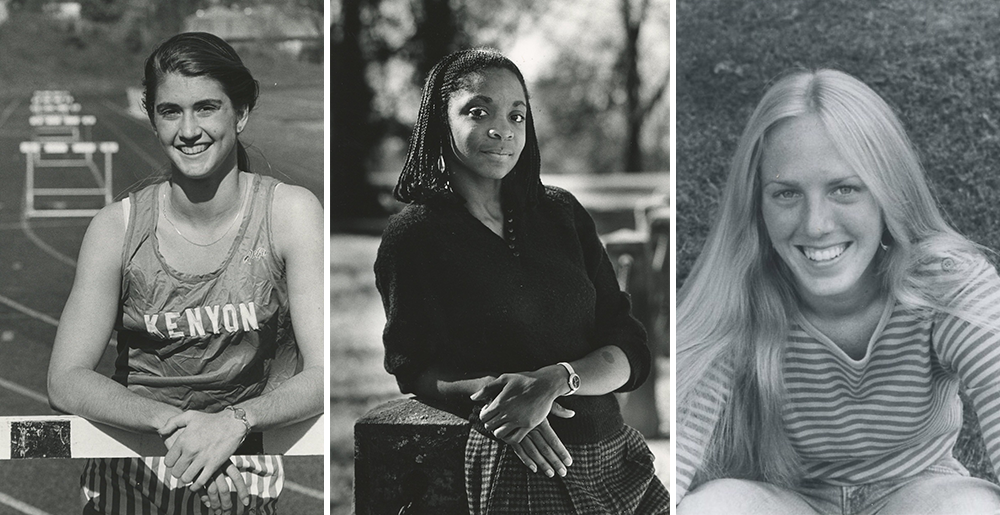
1980s: The Influencers
Female students and professors make their mark at Kenyon and beyond.
1981
In March, the Ladies swimming team makes its first appearance at the National Collegiate Athletic Association’s Division III championships. All-American co-captain Katrina Singer Litchfield ’81 places third in the 200-meter backstroke at Nationals.
1986
Associate Professor of Philosophy Juan DePascuale agrees to be faculty advisor to a new club, Adelante, which aims to promote Latin American and Latinx culture on campus. The founding members include Evelyn King ’92 and Rebecca Vazquez-Skillings ’93.
1987
On July 1, Harlene Marley of the Department of Dance and Drama becomes Kenyon’s first female faculty member to be awarded a full professorship.
1988
On July 1, Lisa Dowd Schott ’80 becomes the first woman, and first Kenyon alumna, to serve as the College’s director of alumni and parent programs.
1989
The Kenyon Athletic Association Hall of Fame inducts its second class, including its first woman, two-sport (swimming and track) All-American Elizabeth Batchelder Boring ’84.
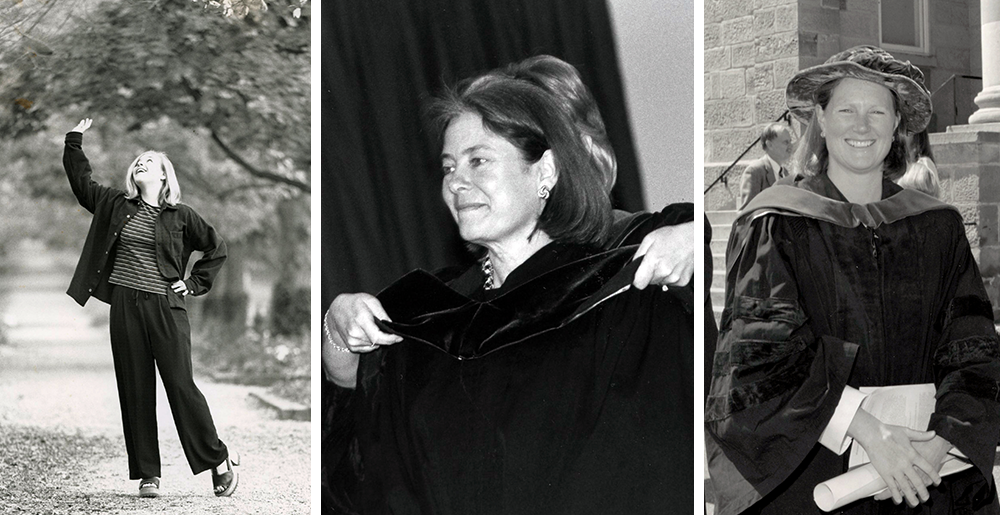
1990s
1991
At the Honors Day Convocation in April, Cornelia “Buffy” Ireland Hallinan ’76 H’91 becomes the first Kenyon alumna to be awarded an honorary doctorate by the College.
1993
At the Honors Day Convocation on April 15, Teresa E. (Cunningham) Lowen ’93 is announced as a recipient of a Marshall Scholarship for graduate study at the University of London. Other women awarded national fellowships and scholarships at Honors Day include Jennifer S. Sampson ’92, Mellon Fellowship in the Humanities, and Sarah Y. Butzen ’93, Thomas J. Watson Fellowship.
On May 13, Roberta Teale Swartz Chalmers, poet, professor, widow of President Gordon Keith Chalmers and often unacknowledged cofounder of the Kenyon Review, dies at her home in Newton, Massachusetts, at the age of 89.
1994
In October, Professor of History Joan Cadden is awarded the Pfizer Prize, recognizing the year’s most outstanding work in the history of science, for her book “Sex Difference in the Middle Ages: Medicine, Science, and Culture.”
1998
On April 14, M. Kristina Peterson ’73, then the executive vice president of Random House Children’s Publishing, receives an honorary doctor of laws at Honors Day. At the same event, Melissa L. Kravetz ’99 becomes the College’s first student to receive both the Doris B. Crozier Award and the E. Malcolm Anderson Cup.
Cornelia “Buffy” Ireland Hallinan ’76 H’91 becomes the first alumna elected chair of the Kenyon Board of Trustees.
Kenyon’s Board of Trustees creates the Dissertation/Teaching Fellowship to allow promising doctoral candidates from under-represented groups to complete their dissertations while teaching on a limited basis and participating in the life of the College. The first fellow is Marla Kohlman, who becomes a permanent member of the faculty in 1999 and later chairs Kenyon’s sociology department.
1999
On April 15, Julia F. Johnson ’73 is awarded an honorary doctor of laws at Kenyon’s Honors Day Convocation.
Inductees to the Kenyon Athletic Association Hall of Fame include the 1972 field hockey and 1973 women’s lacrosse teams and their coach, Karen Burke.
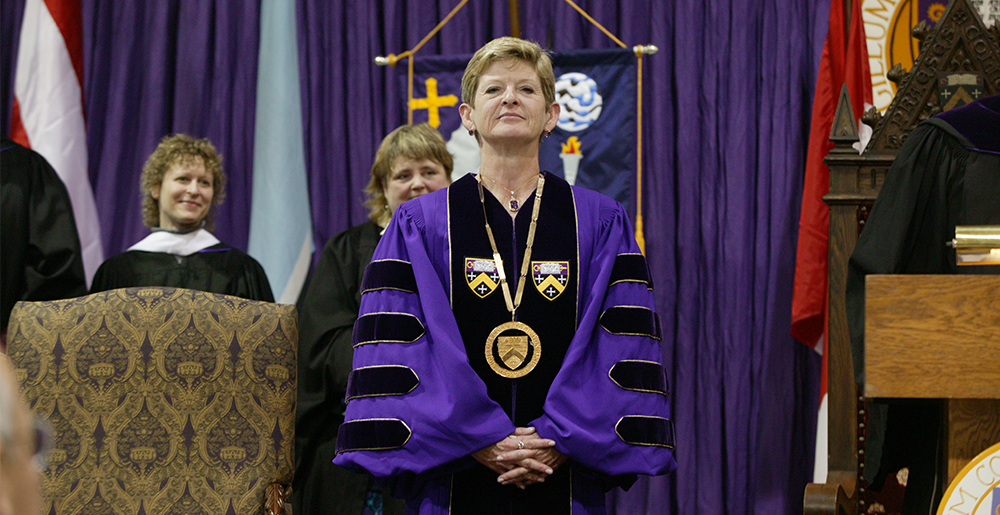
2000s: The Influencers
Female students and professors make their mark at Kenyon and beyond.
2001
The Philander Chase Corporation is created to lead Kenyon’s efforts to preserve the College’s rural environment. Among the members of the inaugural board of directors is Anne C. Griffin ’78, who continues to serve in 2019.
2003
On July 1, S. Georgia Nugent H’13 becomes Kenyon’s 18th president, and the College’s first female president. In her inaugural address, she invites everyone to take part in “this endless odyssey of education,” and thereby to increase “Kenyon’s capacity to act in and transform our world.”
Senior Ashley Rowatt (now Karpinos) is named the 2003 NCAA Woman of the Year and is the first-ever recipient from an NCAA Division III institution.
2004
Following the death of Kenyon parent and trustee Marilyn V. Yarbrough, the College’s board names the Dissertation/Teaching Fellowship in her honor. Yarbrough, a law professor at the University of North Carolina at Chapel Hill, was well-known for her work on race and gender discrimination, sports law and legal education.
2005
On April 12, Debra S. Lunn ’73 is awarded an honorary doctor of fine arts at Honors Day. At the same event, Kelly P. Burke ’06 is announced as one of the College’s three winners of the year’s Barry M. Goldwater Excellence in Education Scholarships.
2007
The Gambier Child Care Center opens in November, making it easier for Kenyon employees to find affordable care for their children. “I think that being a woman contributed to my wanting to improve the child care situation. Inadequate options for child care had been a source of frustration for faculty and staff going back many years,” President Nugent later tells the Bulletin in a Winter 2013 feature published at the end of her presidency.
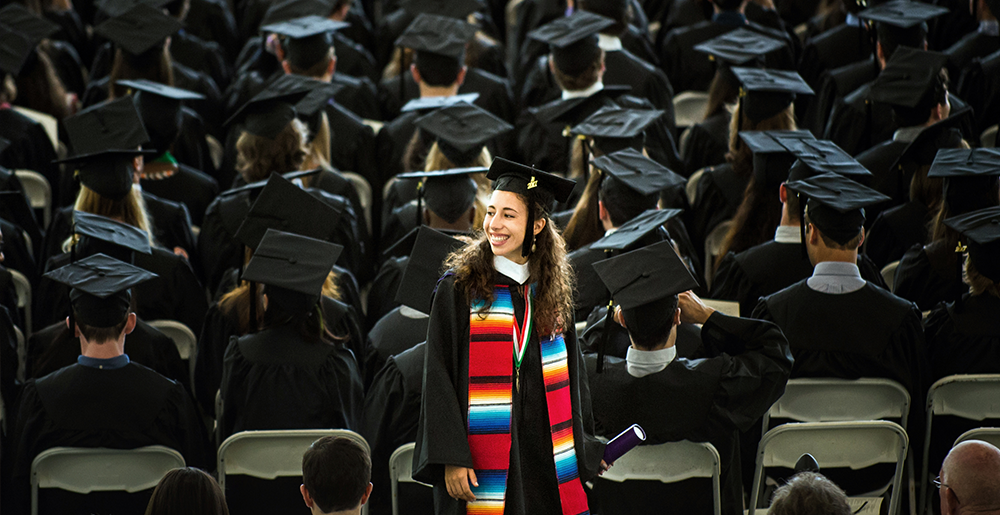
2010s: The Influencers
Female students and professors make their mark at Kenyon and beyond.
2012
The Kenyon Farm is established on Zion Road just east of Gambier. Among the first four students to reside at the farm are Claire O’Connell ’13 and Anna Peery ’14.
2013
On June 30, S. Georgia Nugent H’13 retires as Kenyon’s first female president, after a decade in the position.
2017
On April 19, Kenyon hosts its first Lavender Graduation ceremony for graduating LGBTQ+ seniors in Peirce Pub. Jillian Watts, then-assistant director of the Office of Diversity, Equity and Inclusion, spearheads the effort to bring Lavender Graduation, which is celebrated nationally, to the college.
2019
Kenyon’s student portal, MyBanner, becomes more inclusive for students of all gender identities. An update allows students to easily enter and regularly update their name, gender identity and pronouns electronically, and the information in the system then migrates to the campus mailroom, class rosters, etc.
Photographs courtesy of the Kenyon College Archives.









